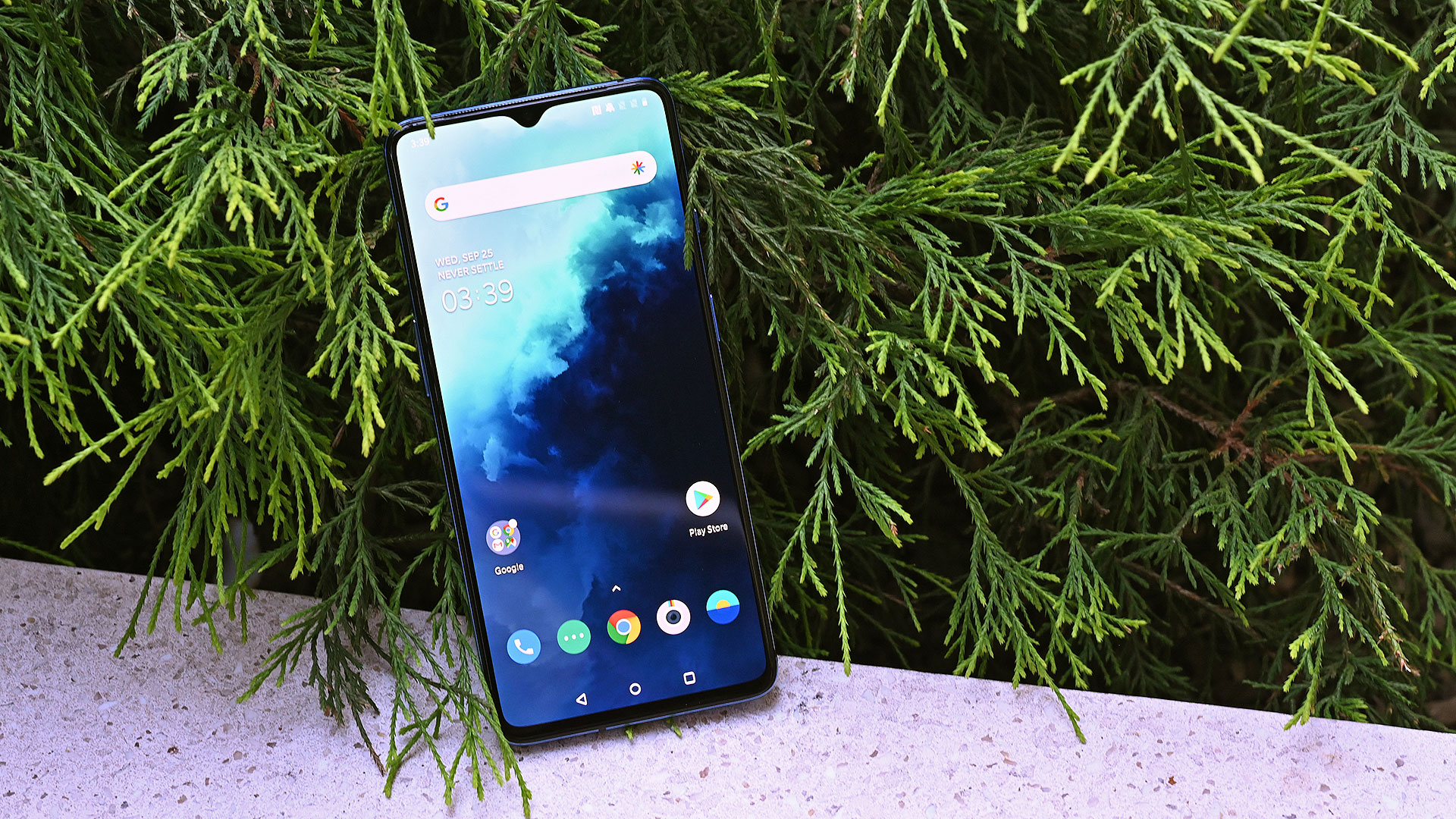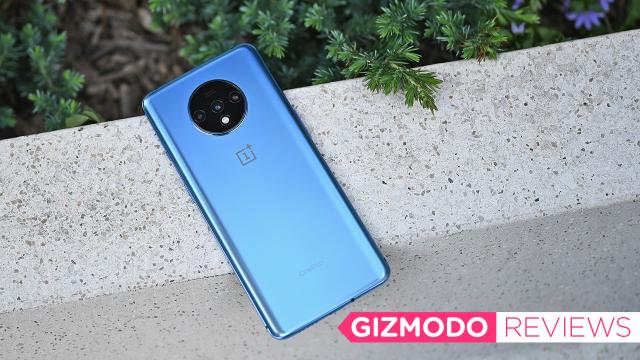From its humble start making “flagship killers” in 2014, OnePlus has become one of the fastest-growing smartphone makers, ranking in the top five globally and overtaking brands like Sony, HTC and even LG — the same companies OnePlus once sought to take down. However, as OnePlus has grown, so too has the price of its phones, from $529 for the original OnePlus One to almost $1,000 for the OnePlus 7 Pro. With the new OnePlus 7T, OnePlus is using its latest handset as a chance to reset expectations when it comes to how we judge good performance and value.
Editor’s Note: OnePlus’ phones are not widely available in Australia, but can be bought online at retailers like Dick Smith and Kogan.

OnePlus 7T
What is it?
A mid-range phone with a 6.55-inch screen
Price
$US600 ($889)
Like
Triple cams, flat screen, 90Hz display, excellent performance and battery life
Don't Like
No headphone jack, wireless charging, microSD card slot, or official water-resistance rating
Starting at $US600 ($889) (and on sale October 19), the OnePlus 7T is actually $100 cheaper than the OnePlus 7 Pro we got earlier this year.
Despite its more affordable price tag, the OP7T still has the most important feature from its predecessor: a screen with a wonderfully smooth 90Hz refresh rate. After using phones like the Razer Phone 2, Asus ROG Phone, and both the OP7 Pro and OP7T, while the overall effect can be subtle, having a higher than normal refresh rate really does add a sense of fluidity that makes using the phone feel more polished and stable. And when you combine that with the OP7T’s vibrant OLED panel, you get an entrancing viewing experience that’s hard to give up when switching back to handsets with standard 60Hz screens.
Meanwhile, on the inside, the OP7T features a new Qualcomm Snapdragon 855+ chip that offers 10 to 15 per cent better performance for both CPU and GPU.
That might not sound like much — to the point you may not notice if you’re just browsing the web or checking in on social media — but in gaming, that extra performance does help you avoid some extra jank or lag than you might have encountered otherwise. And considering Samsung’s latest $1,699 flagship — the Galaxy Note 10 — only comes with a vanilla processor, the OP7T’s ample performance is a welcome bonus.
However, because of the 7T’s slightly lower price, OnePlus did have to make a few adjustments for some of the phone’s other features. Though for a lot of people, many of OnePlus’ changes could be viewed less as trade-offs, and more like sidegrades that function as a refreshing throwback to a time when phones were just a bit simpler.
So instead of the 6.67-inch 3120 x 1440 screen One Plus gave the 7 Pro, the 7T has a 6.55-inch display with a 2400 x 1080 resolution, which is a bit easier to handle for people with smaller hands. The OP7T also has a flat display instead of the curvy 3D glass panel used on the OP7 Pro, which should be a boon to the slice of people that believe phones with sloping displays are harder to use.
The OP7T also has a notch for its selfie cam instead of a motorised pop-up, which admittedly isn’t quite as exciting, but does make you feel better about the phone’s lifetime durability. Sadly, after axing the headphone jack on its phones earlier this spring, it seems the days of getting 3.5mm jacks on OnePlus phones are gone for good, as the 7T’s only port is a USB-C connection on the bottom.
That’s kind of a shame because if the OP7T had a headphone jack and a removable plastic back, the OP7T would almost be a perfect phone for Android diehards who still reminisce about the glory days of phones like the Galaxy S5.
The OP7T’s other major upgrade is the addition of a 16-MP 117-degree ultra-wide camera alongside its 48-MP main cam and 12-MP 2x telephoto cam, which is OnePlus’ first-ever triple cam setup. With triple rear cameras modules becoming standard equipment for practically every high-end phone this year, it’s nice to see a phone that cost almost half as much hop on that trend as well. OnePlus even added a Super Stabilisation mode to the new ultra-wide camera that combines optical and electronic image stabilisation to capture smoother, more shake-free videos.
That said, while the OP7T image quality is pretty good and more than competent for anyone’s whose main portal for photography is Instagram, in a head-to-head photo comparison between the 7T and true flagship phones like the Note 10, OnePlus still sits a tier behind Samsung, Google, and Apple.
In typical situations like taking pictures of apples at a grocery store or of what I had for dinner, the OP7T’s photos consistently lacked sharpness compared to its more expensive competition, while also going overboard on colour saturation. Meanwhile, when I took a picture of a nearby street mural, the OP7T fell just short on things like details and white balance. And with its Nightscape mode turned on, the OP7T had trouble topping Google’s Night Sight on the Pixel 3, producing a darker, yellower final image.
Thankfully, the OP7T’s battery is strong, lasting 14 hours and 30 minutes on our video rundown test. That’s almost an hour longer than the OP7 Pro (13:36) and the standard Note 10 (13:46), but still half an hour shy of the Note 10+’s time of 15:05. OnePlus has even upgraded the OP7T’s charging speeds, so that from a completely dead battery, I was able to get a 39 per cent charge after 15 minutes, and 73 per cent after just half an hour.
As for the rest of the phone, OnePlus has kept important features like its handy alert slider, in-display fingerprint reader (which is actually a touch faster than before) and Oxygen OS, which remains super clean and easy to use, and is also one of, if not the first Android skins to get the update to Android 10.
While the OnePlus 7T may not be as flashy as some of its competitors or even some of OnePlus’ other handsets, it nails almost all of a phone’s most important features while still packing in a few big-ticket items like its 90Hz screen, in-display fingerprint reader, and triple rear cameras. It’s a simple phone with an almost nostalgic approach. Sure, $US600 ($889) is double what the original OnePlus cost at launch, but even after all these years, OnePlus is still delivering on its guiding mission of offering big specs at half the price (or close enough) of today’s flagship devices.
README
-
The OP7T has OnePlus first triple rear camera module
-
The OP7T doesn’t have an official rating for dust or water resistance, but OnePlus says the phone should survive “everyday situations such as rain or a drop in a puddle.”
-
OnePlus still doesn’t do wireless charging for anything, and the headphone hasn’t come back either.
-
OnePlus even include uses its earpiece as a speaker, which gives the OP7T solid stereo audio.
